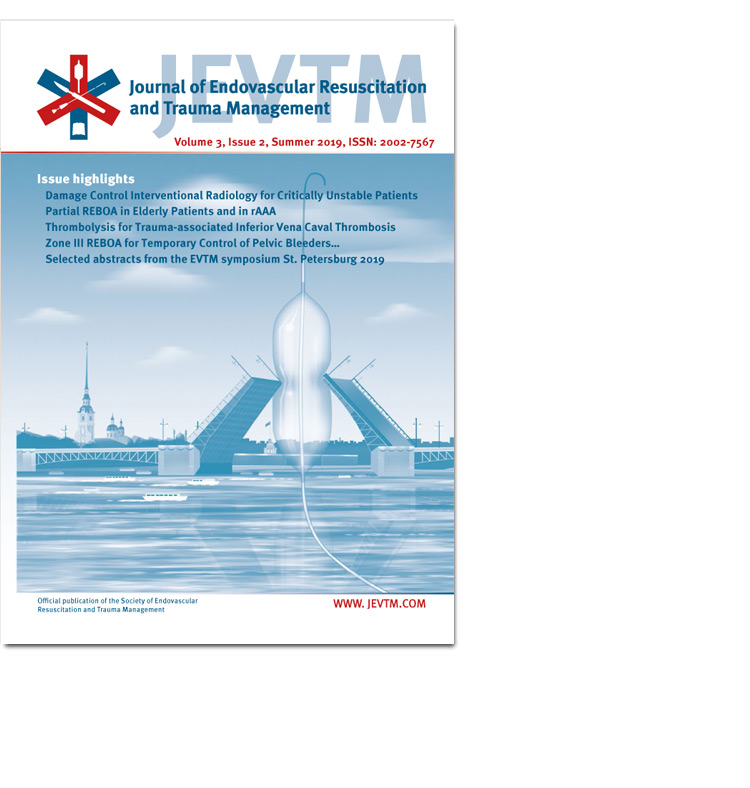Gossypiboma: Is it always what it appears to be? A Rare Complication in Everyday Practice
DOI:
https://doi.org/10.26676/jevtm.v3i2.90Keywords:
Liver Trauma, Gelfoam, GossypibomaAbstract
Background: While the management of liver injury is usually conservative, the major indication for surgery remains hemodynamic instability. Different techniques are described for hemostasis in cases which require surgery. Several commercial hemostatic agents are readily available and can be used as an adjunct after the repair of liver injuries. One of the most well-known local agents is gelfoam, which is used in multiple fields of surgery. The purpose of this work is to present a very rare complication of liver surgery in trauma, using gelfoam following hepatic angioembolization, mimicking gossypiboma.
Design: A case study describing a hemodynamically unstable patient who had a penetrating liver injury. Hemo-stasis was achieved by liver suture and gelfoam with subsequent angioembolization. In the post-operative period, the patient demonstrated signs of intra abdominal sepsis due to liver abscess. Repeated attempts of percutaneous drainage failed, and all cultures were negative. Due to a strong suspicion of a forgotten abdominal pad (gossypiboma), the patient underwent an operation and the object was removed. The final pathological report showed no textile in the specimen, the findings were compatible with a piece of gelfoam without signs of absorption.
Conclusions: Commonly used hemostatic agents are made of gelatin gelfoam, microfibrillar collagen, thrombin, and fibrin sealant. Gelfoam is available in sponge or powder form. The sponge can be left in place and is supposed to be completely absorbed in four to six weeks. In the relevant literature, only one case of gelfoam use related to granuloma formation. In our case, the radiologic findings in the liver were interpreted as an abscess. The suspi-cion of a foreign body was raised only during the second admission and thus forced us to operate. There is no clear reason why the piece of gelfoam was not absorbed in that time period. Our assumption is that post-angiography liver ischemia may have disturbed the process of fibrin destruction. The major take home message is that the lack of gelfoam absorption may mimic an abdominal foreign body, and this needs to be considered in post-operative care.
Published
How to Cite
Issue
Section
License
Copyright (c) 2019 Journal of Endovascular Resuscitation and Trauma Management

This work is licensed under a Creative Commons Attribution 4.0 International License.
Authors of content published in the JEVTM retain the copyright to their works.
Articles in the JEVTM are published under the terms of a Creative Commons CC BY 4.0 license, which permits use, downloading, distribution, linking to and reproduction in any medium, provided the original work is properly cited.




